Day Q-23. Thanks for all the nice words in various places that I’ve posted recipes and pictures, and the emails. It means a lot to keep in touch and to know that people are not just enjoying the posts, but actually trying out some of the recipes. And yes, I’d be delighted to share how to make those beautiful bread rolls of Pan de Manteca.
Manteca… in most of the Spanish speaking world, that means lard. Here in Argentina, it generally means butter, but sometimes lard, but usually not, that’s usually referred to as grasa or grasa blanca, the latter of which would also be understood in most other places. Butter in the rest of the world is mantequilla. So when someone talks to me about using manteca in a recipe, I always have to know where there from, or, better yet, ask which they mean.
Each morning, whenever we’re in Trujillo, someone in the family pops down the block to the woman who makes the pan de manteca, the classic “morning bread”, and that’s what we have for the day. I was when talking with Henry’s sister about making it – she doesn’t make it herself, but was able to give me some ideas of how it’s made (wayyyy over-estimated how much manteca to this much flour), and a bit of online sleuthing, as usual, and then a couple of weeks now of experimenting to get a texture and flavor we like, and… away we go. Lard, by the way, if you were still wondering.
500 grams bread flour (high gluten); 125 grams lard; 1 tablespoon sugar, 1 teaspoon salt, 20 grams fresh yeast (or half a packet of instant). Now, while I haven’t tried it, if you don’t use lard because it’s pork, use beef tallow or suet – I can’t imagine it will be very different. If you don’t eat animal products, give a try for a vegetable shortening, preferably one without, or few, trans-fats – it should work fairly well. Butter has a very different affect on baking, and while you’d likely come out with a tasty bread, the ratio might not be right on, and you’ll definitely have a different texture.
Make a well in the flour, crumble in the yeast, add the sugar, and just a splash, like a quarter cup (60ml) of warm water. Give it a little stir to dissolve the yeast, and let it sit until it’s foamy.
Add the salt and the lard, softened at room temp, or melted – but not hot, or you’ll kill the yeast. Mix it and you’ll get a texture somewhat like this. Add warm water a tablespoon or two at a time until you get a smooth dough, with our type of flour it only took about three more tablespoons.
Knead it well, and, this is what it will look like. It should be nice and soft and smooth.
Cover it with a kitchen towel and set it in a warm place for about 45 minutes to double in size.
And, we’re ready to make our bread rolls.
Quick and easy, punch it down a bit and roll it into a big ball, then cut that in quarters.
Here, decide if you want bigger rolls or smaller ones – we went with cutting each quarter in thirds to get twelve, but you could cut them in half to get eight.
Cup each piece in your hand and roll them around….
…to end up with nice balls of dough.
Flatten them and put them on a baking sheet. They don’t need any kind of non-stick surface or oil – they’ve got all that lard in them, trust me, they won’t stick to anything. Cover them again to let them rise a second time. Now’s a good time to turn your oven on, to 190C/375F.
This will only take about 20-25 minutes, just enough time to get your oven nicely heated. Pop them in, and they take about 20 minutes to cook. I usually turn the baking sheet around 180 degrees in the middle of the baking, just because ovens tend to not bake evenly.
Cook until just a lovely golden brown, and still slightly soft on the surface. This is not a bread that you want a crusty surface – the lard tends to burn if you let it go until it’s dark brown and the flavor is off. We have Pan de Manteca.
Beautiful, no? Perfect size for a sandwich or a burger!
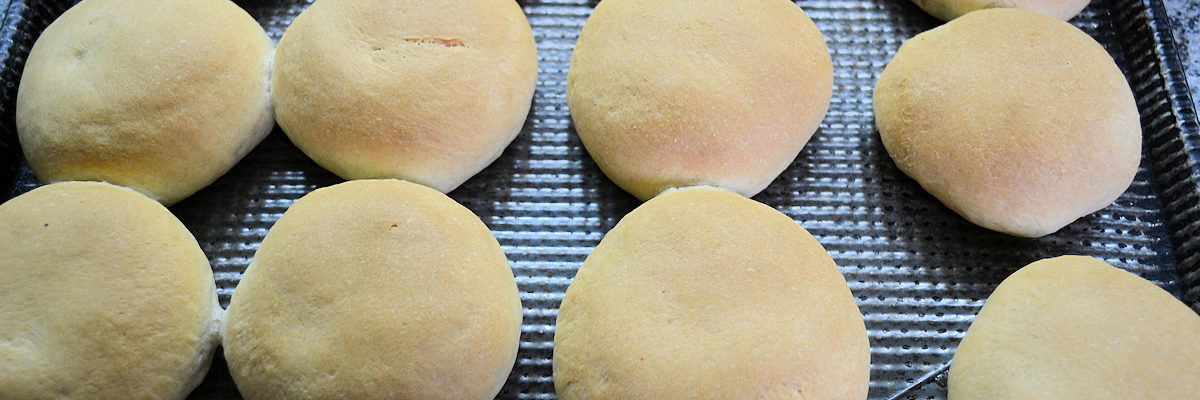
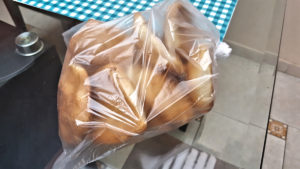
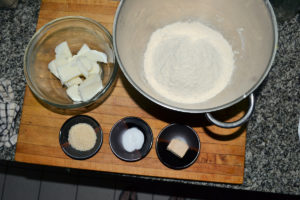
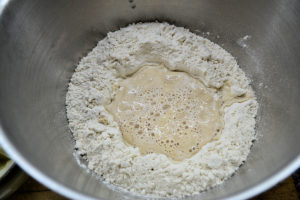
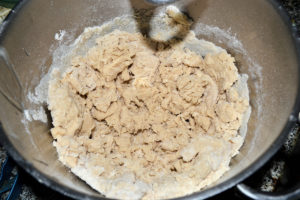
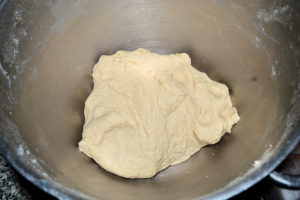
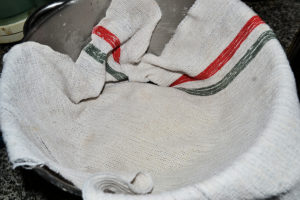
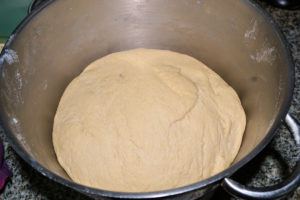
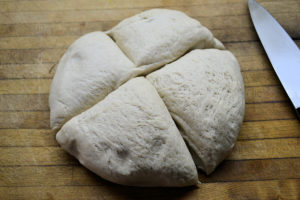
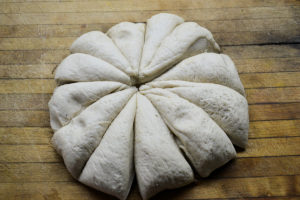
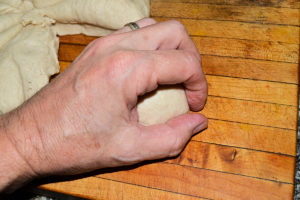
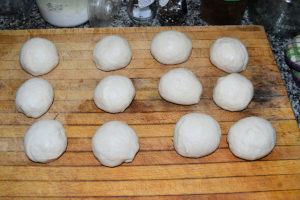
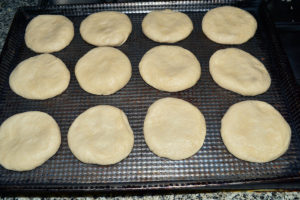
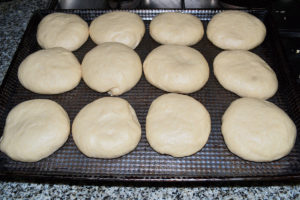
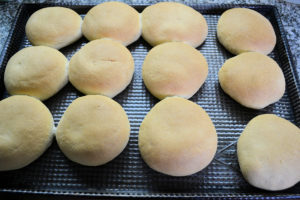
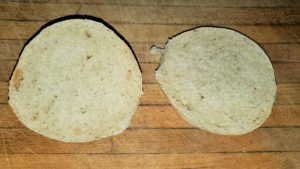
[…] just say, yum. And one of our pan de mantecas was a perfect […]
[…] 400 grams, just shy of a pound, and we included a packet of freshly grated cheese, and, one of our pan de mantecas. I’ve had a couple of requests for how to make a good bolognese sauce. I’d published a […]
[…] Also served up freshly baked Pan de Manteca. […]
[…] de manteca, one of the breads that we started making back during the pandemic’s height when we were delivering breads. It’s a classic bread from around Trujillo, where […]